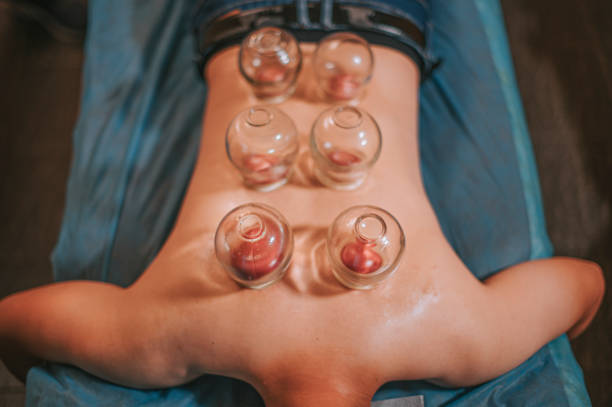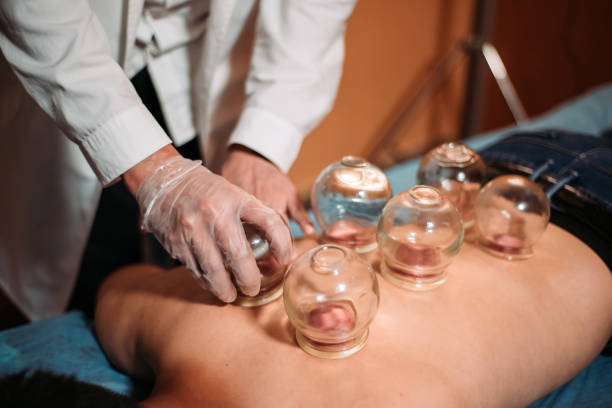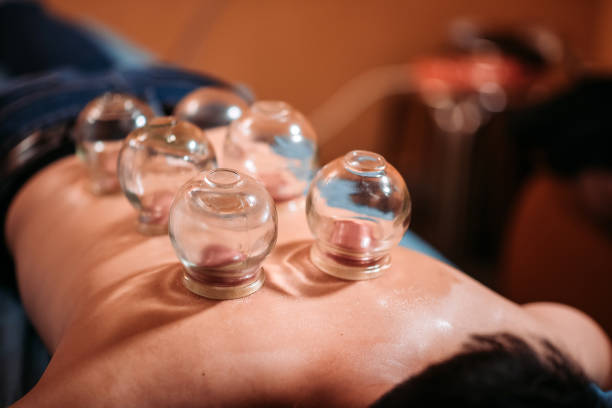Cupping therapy is an ancient healing practice that has been used for centuries in traditional Chinese and Middle Eastern medicine. However, it gained widespread attention in the modern sports world when Olympic athletes, like swimmer Michael Phelps, appeared with noticeable circular marks on their backs during competitions.
This sparked curiosity about the benefits of cupping therapy and why so many top athletes rely on it. Known for promoting muscle recovery, reducing pain, and enhancing athletic performance, cupping has become a go-to therapy for professionals and fitness enthusiasts alike. But how effective is it, and should you consider trying it?
In this guide, we’ll explore the science behind cupping therapy, its benefits for athletes, and whether it could be the right recovery tool for you.
What Is Cupping Therapy?
Cupping therapy is a traditional healing technique that has been used for centuries in Chinese, Egyptian, and Middle Eastern medicine. Today, it is widely recognized as an alternative therapy for pain relief, muscle recovery, and overall well-being. This technique involves placing special cups on the skin to create suction, which helps increase blood circulation, loosen tight muscles, and promote natural healing.
There are two main types of cupping therapy:
- Dry Cupping – In this method, a therapist applies cups to the skin and uses suction to gently pull the skin upward. This process stimulates blood flow, reduces muscle tension, and encourages the body’s natural healing process.
- Wet Cupping – This technique follows the same suction method as dry cupping but includes small, controlled cuts on the skin before the cups are applied. This allows for the removal of small amounts of blood, which some believe helps detoxify the body.
While wet cupping is less common in Western sports therapy, dry cupping has gained significant popularity among athletes looking for a natural way to relieve pain and speed up recovery. Whether used as part of a sports recovery routine or a holistic wellness plan, cupping therapy offers various benefits that appeal to both professional athletes and fitness enthusiasts.erapy, dry cupping is widely used by athletes for muscle recovery.

Why Do Athletes Use Cupping Therapy?
Athletes constantly push their bodies to the limit, leading to muscle fatigue, soreness, and occasional injuries. To stay at peak performance, they rely on effective recovery methods—and cupping therapy has become one of their go-to solutions. This ancient technique is now a popular recovery tool among professional and amateur athletes alike. But why? Because cupping therapy helps speed up muscle recovery, relieve pain, and improve overall athletic performance.
Here’s why so many athletes include cupping therapy in their routine:
1. Boosts Blood Circulation for Faster Healing
Proper circulation is key to muscle recovery. Cupping therapy enhances blood flow to sore and overworked muscles, delivering more oxygen and essential nutrients. This speeds up the body’s natural healing process, reduces stiffness, and helps prevent long-term muscle fatigue.
2. Eases Muscle Soreness and Reduces Pain
After intense workouts or competitions, athletes often experience delayed onset muscle soreness (DOMS), making it harder to train the next day. Cupping therapy helps reduce inflammation and relax tight muscles, making soreness more manageable. Many athletes report feeling noticeable relief after just one session.
3. Improves Flexibility and Enhances Range of Motion
Muscle tightness can limit movement and increase the risk of injury. Cupping therapy helps loosen muscles and connective tissues, improving flexibility and range of motion. This is especially beneficial for gymnasts, swimmers, runners, and other athletes who rely on fluid movement for peak performance.
4. Speeds Up Recovery for Optimal Performance
Athletes don’t have the luxury of long recovery periods. They need to heal quickly to keep up with their training schedules. Cupping therapy accelerates the recovery process by increasing circulation and promoting the removal of toxins from the muscles, allowing athletes to return to training faster and with less discomfort.
5. Reduces Stress and Promotes Relaxation
Athletic performance isn’t just about physical strength—it’s also about mental focus. Cupping therapy helps activate the parasympathetic nervous system, which promotes relaxation and stress relief. Many athletes find that cupping not only helps their muscles but also improves their overall sense of well-being, keeping them mentally sharp for competition.
With so many recovery benefits, it’s no surprise that athletes across various sports swear by cupping therapy. Whether you’re a professional competitor or a fitness enthusiast, incorporating cupping into your recovery routine may help you train harder, recover faster, and perform at your best.

What to Expect During a Cupping Therapy Session
If you’re considering cupping therapy for muscle recovery and pain relief, it’s helpful to know what happens during a typical session. Whether you’re visiting a licensed therapist or trying it at home with professional guidance, understanding the process can help you feel more comfortable and confident about your treatment.
1. Preparation: Setting Up the Session
Before starting, your cupping therapist will determine the best areas for treatment based on your needs. Common target areas include the back, shoulders, legs, and other muscle groups prone to tension and soreness. The therapist will then place specialized cups—made of glass, silicone, or plastic—onto the skin.
2. Suction Process: How the Cups Work
Once the cups are in place, the therapist creates suction using either a manual pump or a flame to remove air from the cup. This suction effect gently pulls the skin upward, promoting increased blood circulation, reducing muscle tightness, and stimulating the body’s natural healing process.
3. Session Duration: How Long It Lasts
The cups typically remain on the skin for 5 to 15 minutes, depending on your comfort level and treatment goals. In some cases, the therapist may use a technique called gliding cupping, where they move the cups along the skin to provide a massage-like effect, further helping with muscle relaxation and recovery.
4. Post-Treatment Effects: What Happens Afterward
After removing the cups, you’ll likely notice red or purplish circular marks on your skin. These marks are not bruises but a result of increased blood flow and minor capillary expansion. They usually fade within a few days to a week. Some people may feel immediate relief, while others might experience mild soreness before feeling the full benefits of the therapy.
Cupping therapy is generally a relaxing and therapeutic experience, but if it’s your first time, communicate with your therapist about any concerns or discomfort. By understanding the process, you can fully enjoy the recovery and performance benefits that cupping therapy offers.

Is Cupping Therapy Safe?
Cupping therapy is generally considered a safe and effective recovery method when performed by a trained professional. It is a non-invasive treatment that many athletes and wellness enthusiasts use to relieve muscle tension, improve circulation, and promote healing. However, as with any therapy, there are some precautions to keep in mind.
Potential Side Effects
While most people find cupping to be a relaxing and beneficial experience, some may experience mild discomfort, skin irritation, or temporary redness in the treated areas. These effects are usually harmless and fade within a few days. The circular marks left by the suction are not bruises but signs of increased blood flow and typically disappear within a week.
Who Should Avoid Cupping Therapy?
Although cupping therapy is safe for most people, certain individuals should consult a healthcare professional before trying it:
- People with bleeding disorders or those taking blood thinners – Since cupping increases blood flow, it may pose a risk for individuals with conditions like hemophilia or those on anticoagulant medications.
- Pregnant women – Expectant mothers should avoid cupping on the abdomen or lower back, as it could cause unwanted pressure on these sensitive areas. However, cupping on other parts of the body may be safe with approval from a doctor.
- People with skin conditions or infections – If you have eczema, psoriasis, or open wounds, cupping may cause irritation or worsen existing skin issues.
How to Ensure a Safe Cupping Experience
To minimize risks and maximize benefits, always choose a licensed and experienced cupping therapist who follows proper hygiene and safety protocols. If you have any underlying health conditions, speak with your doctor before incorporating cupping therapy into your routine.
By understanding the safety considerations and working with a qualified professional, you can enjoy the many benefits of cupping therapy while keeping your health and well-being a top priority.
Should You Try Cupping Therapy?
If you’re an athlete, fitness enthusiast, or someone who deals with muscle pain and tension, cupping therapy could be a valuable addition to your recovery routine. Many professional athletes, including Olympians and sports stars, swear by cupping therapy for its ability to speed up muscle recovery, reduce pain, and enhance flexibility. While scientific research on cupping is still ongoing, countless individuals report experiencing noticeable relief and improved performance after regular sessions.
How to Get Started with Cupping Therapy
Before scheduling your first cupping session, keep these key points in mind:
- Choose a Licensed Professional – Always book an appointment with a trained and experienced therapist to ensure safe and effective treatment.
- Consult Your Doctor If You Have Health Concerns – If you have a medical condition, take blood thinners, or are pregnant, speak with your healthcare provider before trying cupping therapy.
- Listen to Your Body – While many people find cupping beneficial, results vary. Pay attention to how your body responds and adjust your recovery routine accordingly.
Is Cupping Therapy Right for You?
Cupping therapy might not be for everyone, but for many athletes, it’s a game-changing recovery tool that helps them train harder and feel better. If you’re curious about its benefits, why not give it a try? You might find that cupping therapy is exactly what your body needs to stay strong, flexible, and pain-free.
Have you tried cupping therapy? Share your experience in the comments below!

